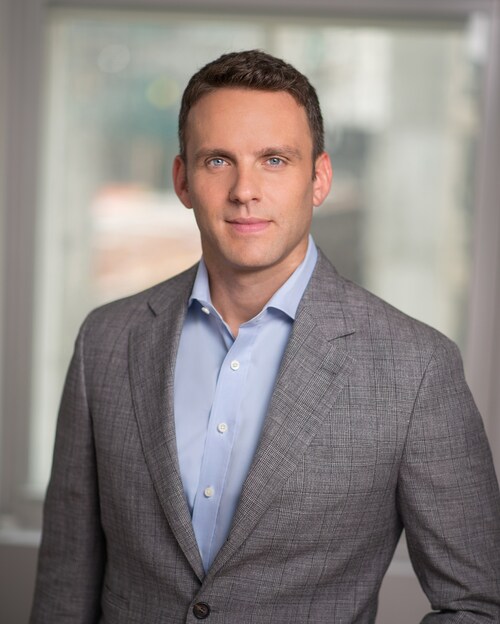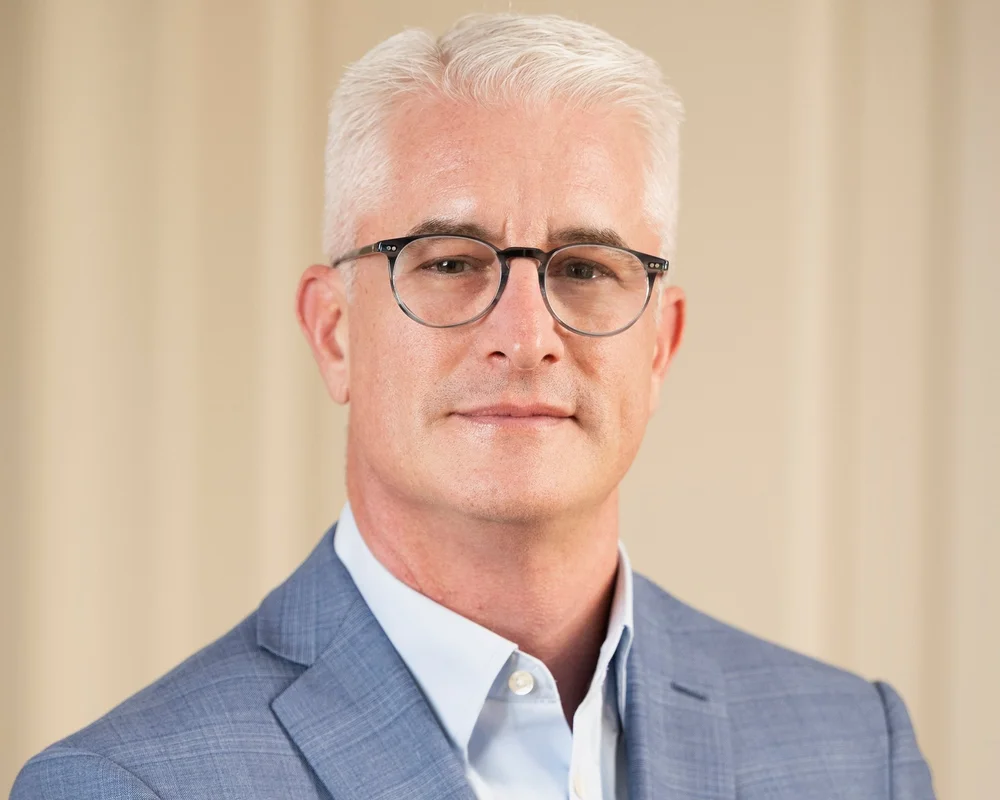 Residential fiber is big right now, and yet it’s just getting started. With all the money backing FTTH buildouts right now, it’s hard to remember how many places there are that you would think have plenty of options but don’t. One such region is California’s Orange County, which is where Cityside Fiber has started rolling out deep fiber infrastructure. With us today to talk about Cityside’s plans, progress, and vision is Founder and CEO Rod Hanson.
Residential fiber is big right now, and yet it’s just getting started. With all the money backing FTTH buildouts right now, it’s hard to remember how many places there are that you would think have plenty of options but don’t. One such region is California’s Orange County, which is where Cityside Fiber has started rolling out deep fiber infrastructure. With us today to talk about Cityside’s plans, progress, and vision is Founder and CEO Rod Hanson.
TR: What is your background and what led to the founding of Cityside?
RH: I’ve spent more than 30 years in this industry. I got into the development side of the business in ’96 doing site acquisition and zoning work for the wireless industry. In 2001, I started my own company doing site acquisition and pre-construction activities for the wireless industry, including a lot of fiber to the cell work. After selling that company in 2013, I later went to work at Crown Castle the VP/GM of small cells and fiber for their West Region. After leaving Crown Castle in November of 2020, I connected with a colleague and we started the early stages of the business plan for what became Cityside and we incorporated in March of 2021. What drove that was two things. The first was my experience at Crown and the difficulty that we were having building out small cells, primarily due to the lack of existing fiber. Where we had fiber, building small cells worked quite well, but where we did not it was very expensive and hard to justify the economic costs to build it for a small cell alone. So that was part of it. The second was COVID, watching broadband become a lifeline and seeing all the flaws we have in our infrastructure was eye opening. It was clear to me that there were a number of big problems that we could try to solve, but that felt like the biggest and most urgent one that made sense for us to try to tackle. If you build dense fiber throughout a city to serve residents and businesses, you could easily design excess capacity to serve other use cases. And that’s kind of what started the whole concept of Cityside.
TR: Why Orange County? Is that your home turf?
RH: It is, but there were several reasons. We looked at a number of markets that would have probably been less expensive and easier to build. The primary thing we were looking at was a lack of fiber and the competitive landscape. The incumbents had not really invested a whole lot here from a fiber perspective, and we saw large areas where the only true high-speed internet option was the cable company. The demographics are great here, and there is high demand for high-speed internet. So, from a demand perspective and a competition perspective, it checked all the boxes. On the one hand it’s difficult and expensive to build here, but that is a double-edged sword. It is a bit of a moat, because people are a little more hesitant to jump in and try to be the third player.
TR: Why do you think Orange County wasn’t cherry picked in the early days of FTTH rollouts?
RH: Philosophically, I’m surprised that we don’t have fiber in every address in the United States. I recognize there’s parts of the country where that just may not be feasible without the government grants that are out there. But in an area like Orange County, as we did our market research, I was pretty shocked that it’s not the case.
I can’t speak for the incumbent, but I’m sure they did the math and decided to go where they could get the most bang for their buck. Once you leave the aerial portions of Orange County, you’re talking about expensive underground construction and difficult permitting. I think that put us way down the list. They do have certain pockets, mostly around the business areas and where it’s aerial and inexpensive for them to build. But the minute you go underground and away from those business areas, there is very little fiber.
TR: Where are you building out fiber right now?
RH: We are under construction in two cities now. We started first in the city of Tustin, and we recently broke ground in Dana Point, which is at the south end of Orange County. And we have a number of other cities planned as well, focusing primarily in southern Orange County. Ideally, we’d like to try to build in each of the communities throughout the area. We look at this as a citywide development, city by city. We think there are advantages to having that ubiquitous coverage throughout an entire city and regionally.
TR: What is the timeframe for turning things up?
RH: We are getting close. We are going to do a soft launch connecting a few beta customers in the beginning of October, and we’re looking to go commercial towards the end of the month. The initial launch should include a little over 2,000 homes to start with and then we’re looking to grow significantly from there. We’ve got about a two-year build plan in Tustin, and we were looking at something similar in Dana Point as well.
TR: How do you manage the cost of the underground build necessary in these areas?
RH: I wish I could say there was a secret sauce. But it’s just hard work: being creative and looking at the problem literally street by street. “How do I build this neighborhood in a way that still supports a reasonable return on investment for our investors.” Part of the answer is coordinating with the cities themselves, having conversations with both the elected officials and their public works departments, coordinating carefully around their street restoration efforts, and taking advantage of those opportunities. We can come in and do micro-trenching where we know they’re coming in shortly thereafter to restore roads. We take advantage of the aerial and other existing infrastructure where it’s available. The areas we’re looking at are probably 30% aerial, 70% underground, and every part of that counts.
TR: How do you approach the regulatory problems in southern California?
RH: It’s not easy. Before we even start submitting permits with the city, we meet with the elected officials and explain what it is we’re doing. We need to make sure that they see this as a benefit so that there’s some political support. Then from there you get into the city staff, city manager, and the public works department. Having support at the higher level does make those conversations easier and they tend to be more willing to talk about how they can enable this rather than throwing up roadblocks. But then it is still just a lot of hard work to design things in a way that keeps the cost within reason and arrive at something that we can build and the city can live with.
TR: What markets will you target after Tustin and Dana Point? Do you see opportunities beyond Orange County as well?
RH: I can’t be specific yet, but there are two more cities that we are teeing up for in Orange County right now. I see opportunity everywhere. The attributes that make Orange County attractive to us exist elsewhere, certainly in parts of LA County and Riverside County and even up in the Bay Area. There are also really good opportunities in some of the surrounding states as well. But for right now, it’s a matter of picking one and then really executing well. So we are really focused on our initial build. We’ve got some benchmarks that we want to hit and then we can talk about if we want to go beyond Orange County or not.
TR: Do you foresee mostly an FTTH approach or will you be reaching out to the SMB and enterprise markets as well?
RH: We view it as a layered approach. The first step is to grid the city with fiber to enable all types of technology. We’re building in excess capacity throughout that to handle things beyond just single-family homes. There will be a dark fiber layer that will be made available down the road for other use cases. We see residential as the immediate use case, followed very closely by SMB, enterprise and then eventually wholesale as well. Right now, though, we see mostly residential and SMB. When you are in the main commercial areas there are more fiber choices. But the minute you leave those areas and try to run a small business in a suburban retail or office center, they have the same choices as residents — which is not much.
TR: Will you be taking just the fiber internet connection and a lot of other people worry about their TV approach or are you going to be layering on some vertical layers like doing your own television package or anything?
RH: Currently, we are encouraging customers to explore streaming options. We have partnered with MyBundle.TV, which is a great tool that you can layer onto your website. It helps customers select the best streaming options based on what they like to watch. That’s what we’re working on right now. We are exploring a couple of other options as well, so stay tuned. I don’t think we’re going to get to the point where we’re buying content or doing anything like that. We would more than likely leverage a relationship with one of the over-the-top providers.
TR: Have you been able to take advantage of existing fiber infrastructure to get things started?
RH: Yes, that has helped tremendously. Our initial middle-mile loop is leased fiber, which allowed us to build out our core network. From that infrastructure we’re building out all our own. There is good connectivity here, it just doesn’t reach out to the neighborhoods. At some point, once things are fully connected, then we will have the opportunity to replace that leased fiber with our own if it makes sense.
TR: There are a lot of companies out there in lots of geographies building out FTTH right now. Do you think we will see consolidators arise in this space like we did in metro fiber?
RH: I think right now, it’s a little early. Companies like ours are still out building. I think that will change over the next three to five years as things start to mature, and you will see some larger consolidators come in. If I had my choice, I would prefer to be one of the consolidators rather than the consolidated. I do think there’s going to be a great opportunity to create large regional players in this space. But to do that one must build the foundation and then prove out the model to be able to expand rapidly either through acquisition or through organic growth.
TR: How is the development of your IT and operations systems coming along while you build out the infrastructure?
RH: It is a bit like we are building the plane as we’re flying it. We are out pulling permits and digging up streets at the same time as we’re standing up our OSS/BSS systems and all the back end systems. The plan is to be fully functional by the end of September, and we’re investing very heavily in systems – we are not bootstrapping. It’s not bailing wire and duct tape. Thanks to our investors, who see the same things we do, we are investing now to put the right systems in place. We are making sure that we have great records of what we’ve put in the ground or hung in the air. We will have the foundation to enable growth and build the machine that allows us to grow without killing ourselves in the process.
TR: Will you be looking to raise more capital to fund that growth?
RH: We’ve got a great partner in SDC Capital Partners. They understand and we have a shared vision of what we should be doing. We have what we need for the first four cities. And they have the ability to fund certainly the first couple of years of our growth and possibly beyond.
TR: What are the biggest challenges ahead in your view?
RH: I’ve been building networks for a good part of my career, so that’s the piece I think I probably feel most confident in. I know it’s not easy, but I know we’ll build it. I think the newer challenge for me is that we really want to change the paradigm for the customer experience. The cable and telco industry has not had the best reputation in terms of customer service and how they’ve treated their customers. Building a network that is fast, reliable, and secure is just table stakes. The differentiator needs to be that the customer feels a completely different experience when they interact with us. That is the area that we need to stay laser-focused on. If we execute well there, I think that’s going to be a game changer for us.
TR: How will you do that?
RH: I think part of it is understanding that we’re local. When someone picks up the phone, they call somebody right here in my office. It might be their neighbor. We are very involved in the community. For instance, we’re a sponsor of the Dana Point High School football team. And we want to answer the phone on the first or second ring. Customer service is not an expense. It’s an investment.
TR: Are you having fun?
RH: I really am. It’s funny. My wife just laughs because she can tell when I’m dialed in and having a good time. This is the second company that I’ve had the good fortune to be able to start up, and I have been able to learn from some of my mistakes in the past. The first time around was a blast, and the second time around, it’s just as much fun, if not more. I just have a bigger sandbox to play in.
TR: Thank you for talking with Telecom Ramblings!
If you haven't already, please take our Reader Survey! Just 3 questions to help us better understand who is reading Telecom Ramblings so we can serve you better!
Categories: FTTH · Industry Spotlight · Metro fiber






Discuss this Post